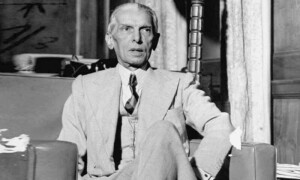THE finance ministry blaming the hikes in State Bank policy interest rates for the rapid growth in public debt is a case of the pot calling the kettle black.
A ministry official told a Senate panel the other day that a 1pc increase in borrowing costs adds a whopping Rs600bn to annual debt-servicing expenses.
He maintained that the debt stock had surged by over Rs7tr since January 2022 due to the increase in the policy rate from 9.75pc to 22pc. That has, indeed, been the case as soaring debt-servicing costs keep forcing the government to borrow more.
As a new World Bank report notes: “Higher policy rates are increasing government borrowing costs, driving higher financing needs. These financing needs are … being met through increased borrowing from the domestic banking system.”
But the official modestly omitted to mention the contribution of the government’s profligate fiscal policies to the quicker growth of its debt stock over the last year and a half, ie, failure to contain its large wasteful expenditures and boost tax revenues by broadening the tax base.
He also didn’t mention how the spike in government borrowing from domestic banks to finance an average fiscal deficit of over 7pc year after year has crowded out the private sector and fuelled price inflation. The higher interest rate is a major contributor to our debt woes. But it isn’t the original sin.
In this case, extravagant fiscal policies are to blame. SBP has no option but to raise borrowing costs to control the aggregate demand, which is expanding mainly because of unrestrained government spending, and tame price inflation.
The government is stuck in a vicious cycle. Its debt problem is likely to be complicated with the passage of time because of its increasing reliance on domestic banks for financing its fiscal deficit amid shrinking external official budgetary support from multilateral and bilateral lenders.
No matter how miscalculated the SBP decision to hold the interest rate in its last monetary policy committee meeting was in the face of elevated inflation, its reluctance is understandable.
The government’s growing need to borrow heavily from the local banks has severely constrained SBP’s ability to contain inflation through policy rate increases. As of June, banks had allocated 74pc of their total loans to the public sector.
In contrast, credit to the private sector is down to 26.2pc from 30.3pc a year ago. Reduction in the primary budget deficit is the only sustainable solution for the government to cut its bank borrowings, alleviating the need for new inflationary liquidity injections from the central bank.
To achieve that, the government would have to shrink its budget deficit to 2-3pc by increasing tax revenues to 25-20pc of GDP and cutting its wasteful expenditures.
Published in Dawn, October 6th, 2023














































Dear visitor, the comments section is undergoing an overhaul and will return soon.